BUTTER!!
In the past I’ve shared that I’m from Swedish and Danish stock. If you’re also Scandinavian, you know how much we love (yes, LOVE) our butter. I even have a painted frying pan on my wall (from my Grandma Alice Valborg Jacobson) that says in Swedish, “Food tastes better made with butter and love.” Amen, amen!
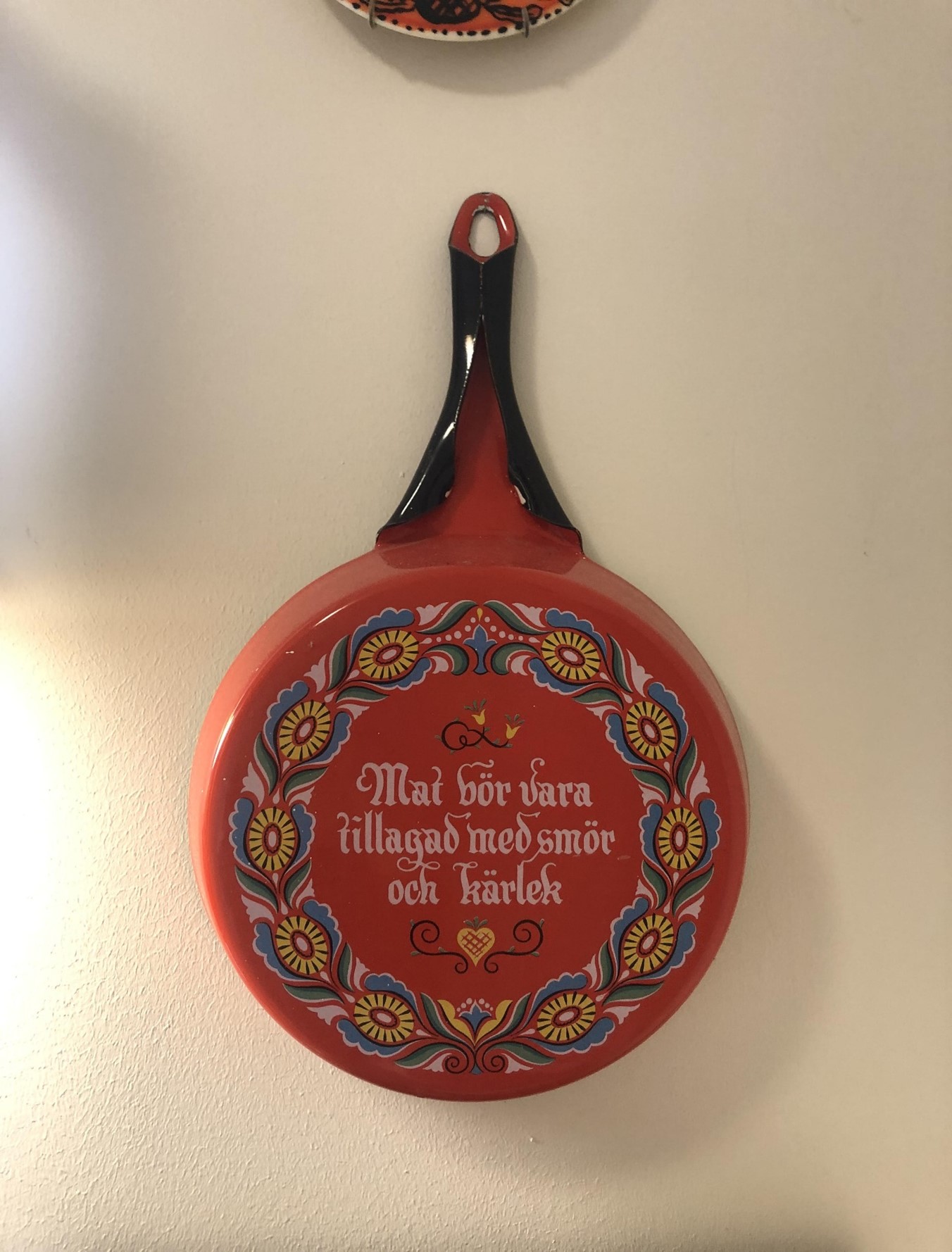
With that introduction, you can guess that butter is my topic. Long term storage of butter, to be precise. The thought of not having butter around (for any reason), almost brings on delirium tremors.
As unpredictable as the world is today, and as attached to butter as some of us are, it seems that knowing how to store it properly for the long haul is a smart idea. Linda Loosli, of www.foodstoragemoms.com, agrees and sent out some handy tips for doing so in her latest newsletter. Thank you Linda! Here are her HOW-TOs:
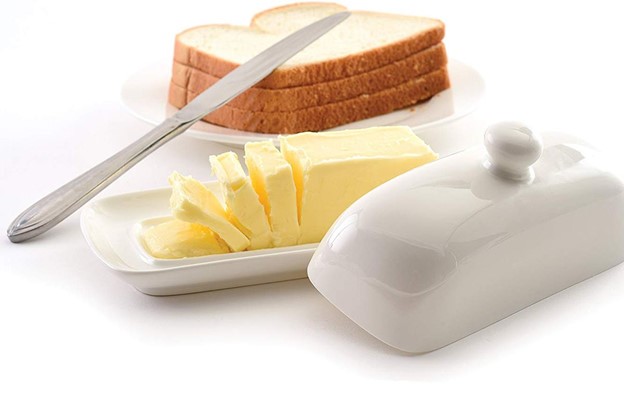
The first step to storing butter long-term is to choose the right type of butter. Not all butter is created equal, and some types are more prone to spoiling than others. I didn’t know this, but unsalted butter is more perishable than salted butter, so if you want to store your butter for a long time, choose salted butter.
The next step is to wrap your butter properly. The best way to wrap butter is by using wax paper or parchment paper. You should avoid using plastic wrap as it doesn’t allow the butter to breathe. Linda says she stores her butter in its original packaging. I do too. And when I see it go on sale I buy as many as my budget allows.
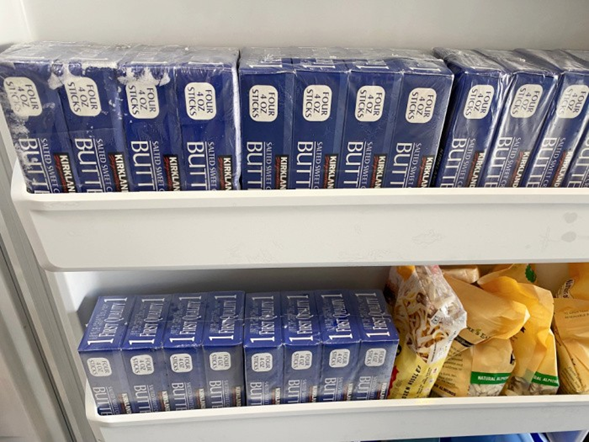
When I get home, I place them in the freezer for future use. It’s true that there’s always the off chance we could lose power. But the odds are in our favor that more often than not we’ll have power.
There’s one issue to freezing butter (besides a power outage probability) and that’s thawing it correctly. When you’re ready to use frozen butter, thaw it in the fridge rather than at room temperature. Thawing butter at room temperature can cause it to melt. You should also avoid thawing butter in the microwave as it’s too easy to overdo it and cause the butter to cook and become oily.
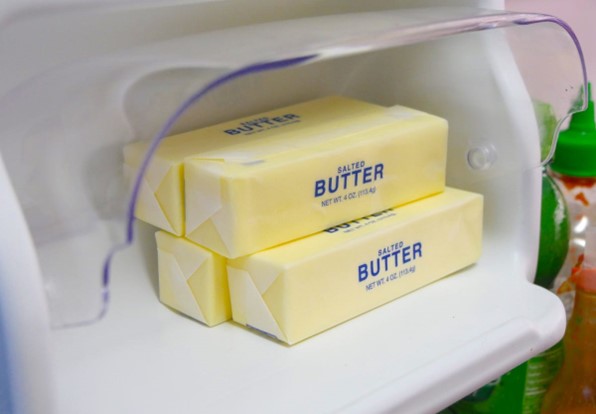
Finally, know that the container you choose to store it in can affect its shelf life. If you’re storing butter in a butter keeper or a butter dish, make sure that the container is airtight to prevent air from getting in. Otherwise, oxygen can cause the butter to spoil or turn rancid.
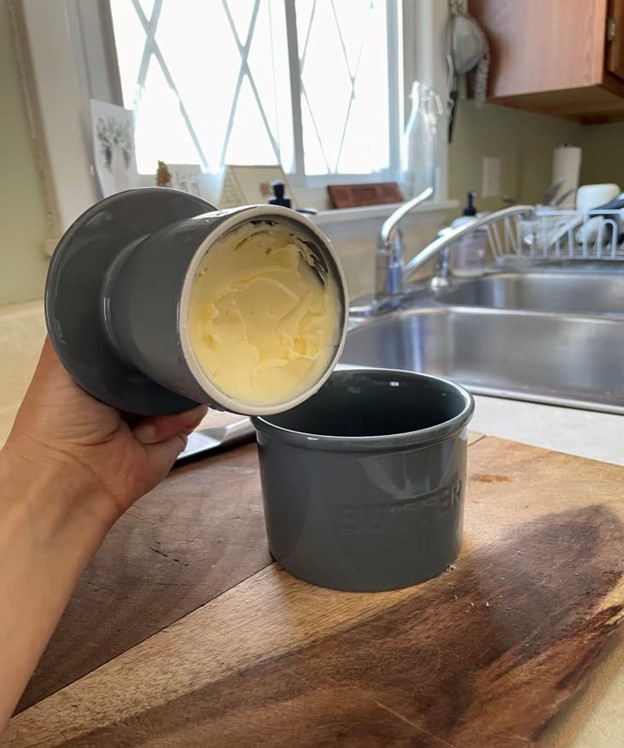
This last bit of advice leads me to the BUTTER BELL. This is a crock-style dish that keeps butter fresh and spreadable at all times. It has two parts – a base and a lid. The base is filled with water, while the lid holds the butter. To use a butter bell, you first soften the butter, then pack it into the lid. You then invert the lid and place it into the base. The water seals the butter, preventing bacteria and air from reaching it. Just leave the butter bell out on your counter. To keep the butter fresh, simply change the water every few days.
blog comments powered by Disqus

With that introduction, you can guess that butter is my topic. Long term storage of butter, to be precise. The thought of not having butter around (for any reason), almost brings on delirium tremors.
As unpredictable as the world is today, and as attached to butter as some of us are, it seems that knowing how to store it properly for the long haul is a smart idea. Linda Loosli, of www.foodstoragemoms.com, agrees and sent out some handy tips for doing so in her latest newsletter. Thank you Linda! Here are her HOW-TOs:

The first step to storing butter long-term is to choose the right type of butter. Not all butter is created equal, and some types are more prone to spoiling than others. I didn’t know this, but unsalted butter is more perishable than salted butter, so if you want to store your butter for a long time, choose salted butter.
The next step is to wrap your butter properly. The best way to wrap butter is by using wax paper or parchment paper. You should avoid using plastic wrap as it doesn’t allow the butter to breathe. Linda says she stores her butter in its original packaging. I do too. And when I see it go on sale I buy as many as my budget allows.

When I get home, I place them in the freezer for future use. It’s true that there’s always the off chance we could lose power. But the odds are in our favor that more often than not we’ll have power.
There’s one issue to freezing butter (besides a power outage probability) and that’s thawing it correctly. When you’re ready to use frozen butter, thaw it in the fridge rather than at room temperature. Thawing butter at room temperature can cause it to melt. You should also avoid thawing butter in the microwave as it’s too easy to overdo it and cause the butter to cook and become oily.

Finally, know that the container you choose to store it in can affect its shelf life. If you’re storing butter in a butter keeper or a butter dish, make sure that the container is airtight to prevent air from getting in. Otherwise, oxygen can cause the butter to spoil or turn rancid.

This last bit of advice leads me to the BUTTER BELL. This is a crock-style dish that keeps butter fresh and spreadable at all times. It has two parts – a base and a lid. The base is filled with water, while the lid holds the butter. To use a butter bell, you first soften the butter, then pack it into the lid. You then invert the lid and place it into the base. The water seals the butter, preventing bacteria and air from reaching it. Just leave the butter bell out on your counter. To keep the butter fresh, simply change the water every few days.
 Alice Osborne
Alice Osborne
Weekly Newsletter Contributor since 2006
Email the author! alice@dvo.com
Sources:
- www.eater.com
- www.foodstoragemoms.com
- www.cnet.com
- www.thekitchn.com
